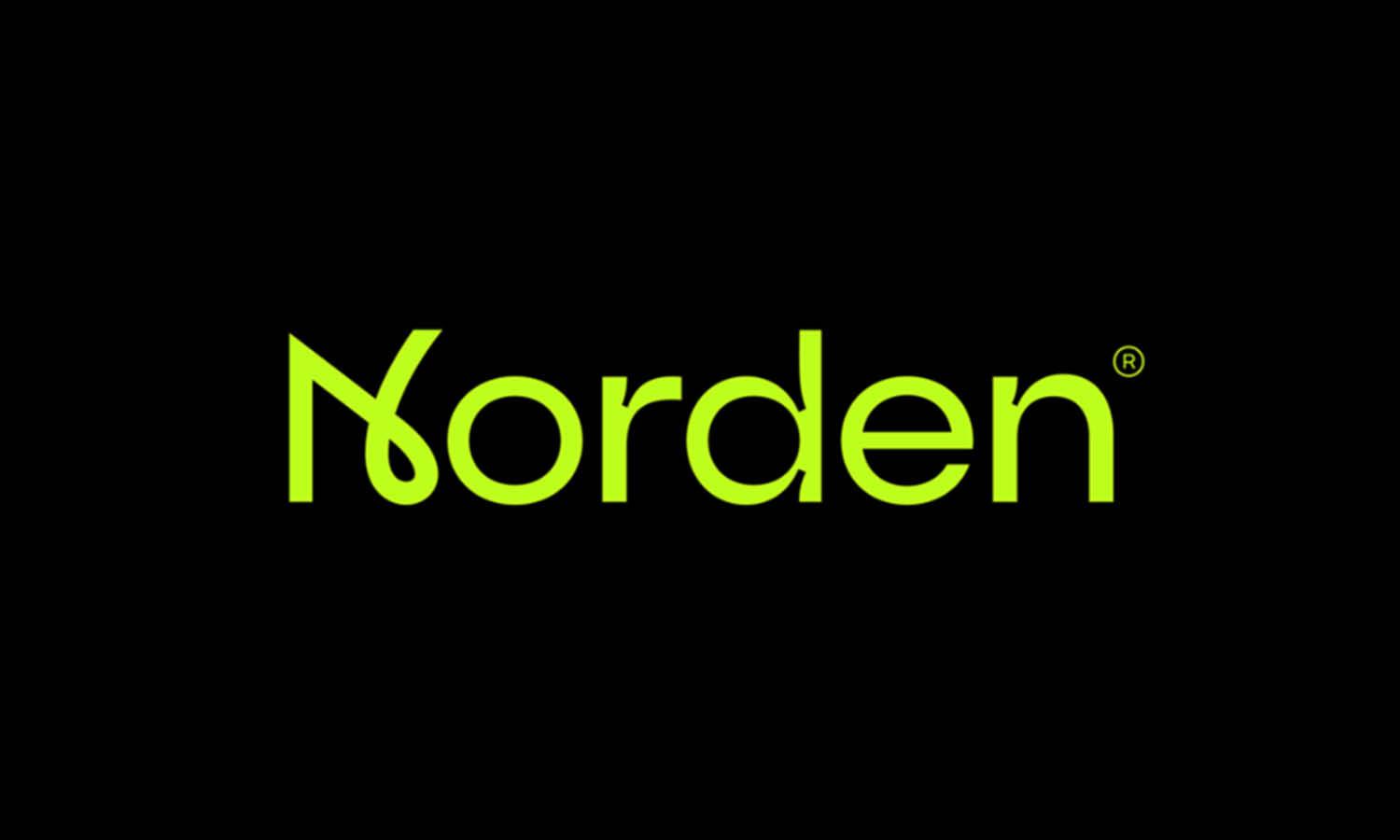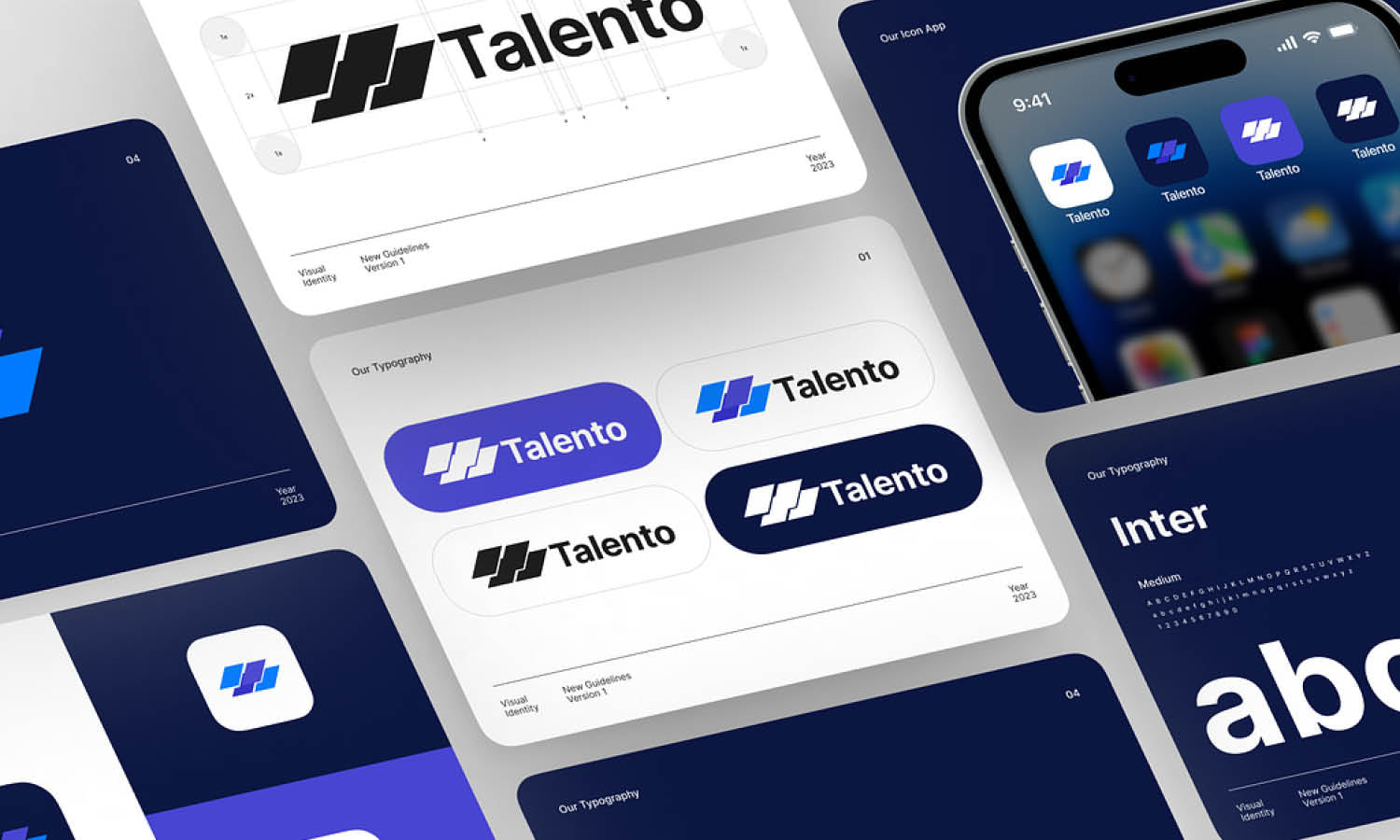Reasons Why You Should Have A Black & White Logo Design

Source: Luis Vasquez, Logo Collection Vol. 03, Behance, https://www.behance.net/gallery/158012261/LOGO-COLLECTION-VOL04
In the vast spectrum of branding, the choice of a logo's color scheme is pivotal. Among the myriad options, a black & white logo design stands out for its clarity, versatility, and timeless appeal. This color combination strips down a logo to its fundamental aspects, emphasizing form and content over the distraction of color. This focus enhances the logo’s communication, making it more accessible and memorable.
Opting for a black & white logo design is not merely a stylistic choice—it's a strategic decision that can benefit businesses across all industries. Whether you're launching a new brand or thinking about rebranding, the simplicity and adaptability of black and white can convey your brand's values effectively. It ensures that your logo performs well across various applications—from digital media to print—maintaining consistency and recognizability.
Despite the continuous evolution of design trends, the monochromatic approach to logos remains a powerful cornerstone in the realm of visual identity. This is not a mere coincidence; it is a testament to the enduring strength that black and white logo designs can bring to a brand. If you're looking to establish a strong personal brand, make your own logo to market yourself, and consider the impactful simplicity of a black and white design.
In this article, we explore the compelling reasons why a black and white logo might be the perfect choice for your brand, providing insights into how this approach can enhance your brand's identity and market presence.
Timeless Appeal
One of the most compelling reasons to choose a black & white logo design is its timeless appeal. This color scheme has been a staple in the design world for decades, proving that it does not succumb to the whims of changing trends. Black and white logos stand out for their classic elegance and simplicity, which appeals to a broad audience across different times and cultures. Brands like Nike, Apple, and Chanel have leveraged this approach to create iconic logos that are instantly recognizable worldwide. The absence of color forces the focus on the design itself, highlighting the logo's form and structure.
This not only ensures it remains relevant over the years but also strengthens brand recognition. A black & white logo remains sharp and effective, whether viewed on old media formats or the latest digital platforms, ensuring your brand's image stays consistent and professional in any context. Choosing black and white is choosing a visual identity that lasts and continues to engage audiences, regardless of passing fads.
Versatility in Usage
The versatility of a black & white logo design cannot be overstated. This minimalist approach guarantees that the logo will look good on any backdrop, from corporate stationery to billboards, without the need for color adjustments. It ensures that the logo maintains its integrity whether it's printed in a newspaper, presented on a website, embroidered on apparel, or emblazoned on promotional items. The high contrast of black and white offers excellent visibility, which is essential for capturing attention across various media and environments. Furthermore, this simplicity allows for more flexibility in branding without the risk of color clashes.
For businesses that require a logo to appear alongside other brands, such as in sponsorships or partnerships, black and white ensures that the logo remains distinct and neutral. It adapts seamlessly to various design aesthetics and can be integrated into multiple branding materials with ease. Thus, a black & white logo design not only stands the test of time but also meets the multifaceted demands of modern marketing channels.
Cost-Effectiveness in Printing
A black & white logo design is not just a stylistic choice; it's a cost-effective solution for businesses looking to maximize their budget without sacrificing the quality of their branding materials. The financial advantage of opting for black and white over color printing can be significant, especially for startups and small businesses. Printing in black and white reduces costs substantially, as it involves fewer inks and simpler printing processes. This is particularly beneficial when bulk printing materials such as business cards, stationery, promotional brochures, and product packaging. The reduced printing costs also extend to merchandising, where the logo can be reproduced on various products without the need for specialized and expensive color matching techniques.
Additionally, the maintenance of print equipment and the replenishment of supplies are more manageable and less costly when only black ink is required. This simplicity can lead to faster production times, enabling quicker distribution and a more agile response to market needs. By choosing a black & white logo, companies can invest the saved resources into other essential areas like marketing strategies or product development, ensuring that the brand not only looks professional but also operates efficiently.

Source: Jc Black, Logofolio, Behance, https://www.behance.net/gallery/156755663/Logofolio-Logo-Type-Marks
Strong Visual Impact
The visual impact of a black & white logo design is undeniable. In a world where consumers are bombarded with colorful advertising, a black and white logo can cut through the noise, offering a bold and clear statement. This high contrast setup ensures that the logo grabs attention and sticks in the memory longer than more complex designs. Black and white designs can leverage powerful contrasts and nuances in shading that draw the eye and emphasize the logo's key features. This focus on contrast and simplicity helps to highlight the brand’s identity and core values without distraction. Such logos are often seen as more sophisticated and elegant, attributes that can elevate the perceived value of the brand.
Moreover, the psychological effects of black and white can play a significant role in how a brand is perceived. Black can convey strength, sophistication, and stability, while white often represents purity, simplicity, and calm—combining these can create a dynamic impression that resonates on an emotional level with consumers. This striking visual appeal makes black & white logos not just seen but remembered, enhancing brand recognition and loyalty among target audiences.
Simplifies Brand Messaging
A black & white logo design serves as a powerful tool for simplifying brand messaging, making it clear and immediately recognizable. By stripping away the complexity of color, these logos focus solely on the essential elements—shape, texture, and typography. This reduction allows the core message of the brand to come through more forcefully and directly. The simplicity of black and white facilitates quicker and more effective communication with the audience, as there are fewer distractions that can detract from the central message. It encourages designers to focus on the fundamentals of design craftsmanship, such as balance and proportion, which are vital for creating a memorable and impactful logo.
Additionally, the straightforward nature of black and white can enhance a brand's credibility and authority, as it often associates these qualities with minimalism and efficiency. This can be especially beneficial in industries where trust and clarity are paramount, such as finance, legal, and health services. A black & white logo design not only makes a strong visual statement but also ensures that the message it conveys is concise and potent, enhancing the audience's ability to understand and connect with the brand at a fundamental level.
Enhances Design Elements
Choosing a black & white logo design accentuates the logo’s fundamental design elements, pushing designers to rely heavily on form, composition, and shading to convey the brand's identity. Without the use of color, every line, curve, and font choice becomes more significant. This emphasis on basic design principles encourages a deeper focus on creating a logo that is not only visually appealing but also inherently meaningful. In black and white, the subtleties of design—such as line thickness, font weight, and the interplay between positive and negative space—become more pronounced. These elements work together to build a stronger visual narrative that can communicate the brand's story more effectively. Furthermore, the absence of color forces a logo to stand on the strength of its design alone, which can lead to more creative and innovative solutions.
This focus on design purity can elevate the overall aesthetic of the brand, making it appear more sophisticated and timeless. A black & white palette also allows for greater consistency across all branding materials, as it eliminates the potential discrepancies that can arise with color reproduction. By enhancing the design elements, a black & white logo ensures that the brand is represented with precision and clarity, regardless of where or how the logo is used.
Professional Appearance
A black & white logo design inherently exudes a professional appearance that can significantly bolster a brand's credibility. This color scheme is synonymous with sophistication, making it a popular choice among businesses in industries where professionalism is paramount, such as legal, financial, and high-end retail sectors. The stark contrast between black and white provides a sharp, clean look that conveys seriousness and authority. It strips away the playful connotations that often accompany more colorful logos, placing a firm focus on the brand's commitment to quality and professionalism.
By choosing a black & white logo, companies communicate a message of reliability and trustworthiness to their clients and partners. This can be particularly effective for startups and companies looking to establish themselves in competitive markets, as it projects an image of stability and established presence. Moreover, a black & white logo can seamlessly integrate with corporate attire, office decor, and professional marketing materials, enhancing the overall brand coherence and maintaining a consistent professional image across all touchpoints.

Source: Luis Vasquez, Logo Collection Vol. 03, Behance, https://www.behance.net/gallery/158012261/LOGO-COLLECTION-VOL04
High Adaptability
Black & white logo designs boast high adaptability, thriving across various applications and environments without losing their effectiveness. This adaptability makes them particularly suited for brands that operate in diverse sectors or have a broad target audience. The simplicity of black and white ensures that the logo remains legible and impactful whether it is displayed on digital screens, printed on paper, or used in promotional merchandise. It also allows for easy integration into multimedia content, including television commercials and online advertisements, where colors can vary due to different display settings.
Furthermore, black & white logos are immune to the issues of color perception among those with color blindness, ensuring that the logo’s message and design are accessible to a wider audience. This level of adaptability extends to co-branding opportunities where the logo must sit alongside other brands. A black & white logo can stand out without clashing with other logos, which often use varied color schemes. This capability is invaluable in collaborative efforts, such as sponsorships or partnerships, ensuring the logo maintains its presence and recognizability in every situation.
Facilitates Brand Consistency
Maintaining brand consistency across all platforms and materials is crucial for building trust and recognition, and a black & white logo design significantly facilitates this process. The simplicity and clarity of a black and white palette ensure that the logo remains consistent in various contexts, whether it is printed, digital, or fabricated. This consistency helps solidify the brand identity and reinforces the brand's presence in the market. Unlike colored logos, which may appear different due to variations in material, printing processes, or digital displays, black and white logos remain unchanged, delivering a uniform appearance across all branding efforts.
This uniformity is essential for businesses that require a cohesive brand image to resonate with their audience consistently. It avoids the discrepancies that often come with color reproduction, which can vary dramatically depending on the medium. By employing a black & white logo, companies can avoid the complexities and expenses associated with matching specific hues, ensuring that their branding is straightforward yet impactful. This approach not only strengthens the brand’s market position but also streamlines marketing strategies, making it easier to manage brand assets and deploy them effectively.
Effective in Any Size
The effectiveness of a black & white logo design is not limited by size; its clarity and impact are maintained whether it is enlarged for a billboard or reduced for a business card. This scalability is a critical advantage in branding, ensuring that the logo remains legible and compelling at any size. The high contrast and reduced visual elements of black and white facilitate this versatility, making it easier for the design to hold its integrity and distinctive features under varying conditions. Small-scale applications, such as favicons on websites or social media icons, benefit enormously from a black and white approach, as the simplicity helps maintain detail and recognizability.
Conversely, when scaled up for larger formats like outdoor advertising or corporate signage, the same logo continues to command attention without any loss of quality. This ability to adapt to different scales without modification ensures that the brand remains consistent and recognizable in all visual touchpoints. For businesses that operate across diverse mediums, adopting a black & white logo can be a strategic move, simplifying brand management and enhancing visual communication with their target audience, regardless of where or how the logo is viewed.
Conclusion
Opting for a black & white logo design offers distinct advantages that extend beyond aesthetic simplicity. Its timeless appeal, professional demeanor, and high adaptability make it an excellent choice for brands aiming to cultivate a strong and enduring identity. Black and white logos not only ensure cost efficiency and facilitate brand consistency but also maintain their effectiveness across various sizes and applications. This approach allows brands to communicate their values and message clearly, enhancing recognition and resonance with their audience. Ultimately, a black & white logo stands as a powerful tool in the arsenal of any brand looking to make a lasting impression.
Let Us Know What You Think!
Every information you read here are written and curated by Kreafolk's team, carefully pieced together with our creative community in mind. Did you enjoy our contents? Leave a comment below and share your thoughts. Cheers to more creative articles and inspirations!















Leave a Comment